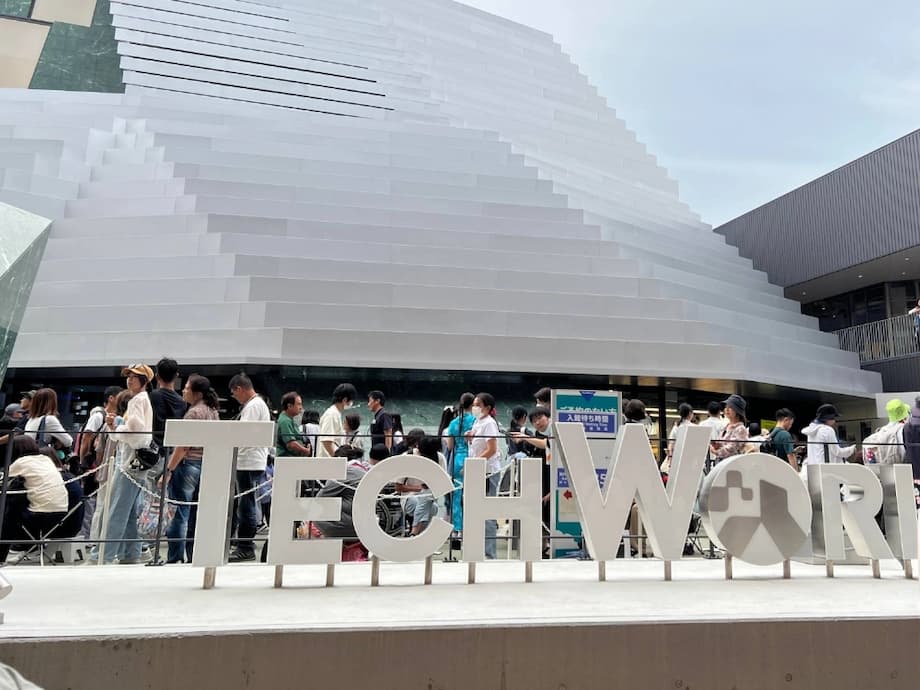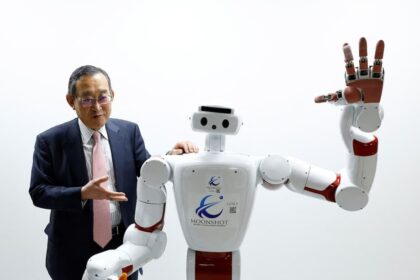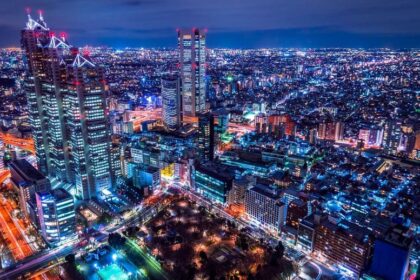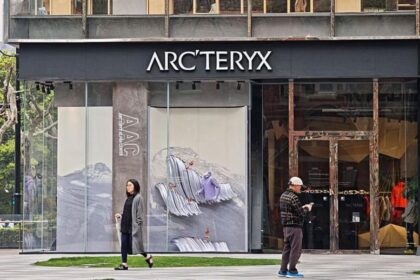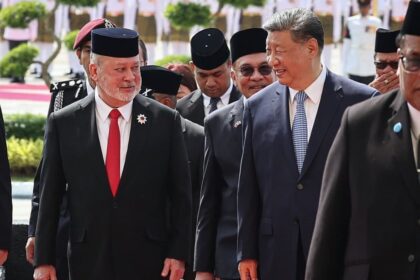A striking tech showcase outside the Grand Ring
With the Osaka Expo entering its final stretch, one of the most talked about attractions sits just beyond the venue’s iconic wooden Grand Ring. The Tech World pavilion, created by a Taiwan backed team, uses sweeping digital art and interactive storytelling to make one argument clear: semiconductors sit behind much of the innovation people touch every day. The pavilion has become a magnet for visitors who want both spectacle and substance, and it delivers both with a theatrical approach that links nature, culture, and the science inside a chip.
- A striking tech showcase outside the Grand Ring
- Inside the experience: from mountains to microchips
- A pointed message about semiconductors
- Why Taiwan is a private exhibitor
- Recognition and public response
- Japan Taiwan chip ties rise outside the Expo grounds
- What semiconductors do and how the pavilion explains them
- Visiting tips and standout moments
- Key Points
The project is a study in creative diplomacy. Taiwan is not a member of the Bureau International des Expositions (BIE), so it cannot run an official national pavilion. Instead, a Tokyo based company called Tamayama Digital Tech fronts the exhibit. Tamayama was set up in 2021 by the Taiwan External Trade Development Council and its name uses the same kanji characters as Yushan, the highest mountain in Taiwan. Inside the grounds, the team avoids national symbols while still telling a distinctly Taiwanese story through design, technology, and visitor experience.
Tech World stands just outside the ring that houses official country pavilions, which makes the crowds lining up for entry even more striking. Visitors step from the timber calm of the Grand Ring into a space that feels cinematic, with screens that move, soundscapes that swell, and a flow that keeps people moving while giving them room to pause and look closer.
Who is behind Tech World
Tamayama Digital Tech, the operator of Tech World, was created to give Taiwan a presence at a global expo stage where membership rules are complex. Backed by the trade promotion body in Taipei, the company hired designers and technologists to build a pavilion that works as a gallery, a lab, and a showroom for key industries. The decision to choose a name linked to Taiwan’s mountains is a subtle nod to identity. It also matches the pavilion’s visual language, which draws heavily on the island’s peaks and forests to frame its message about chips and advanced electronics.
Inside the experience: from mountains to microchips
The building and exhibits revolve around the idea of Mountains of the Heart, a design cue that turns Taiwan’s topography into a living set. Curving forms evoke mountain ridges. Light plays across surfaces like sunrise over granite. The aim is to connect visitors emotionally to a place and then show how technology, much of it made in Taiwan, shapes the way people live, learn, and heal.
Mountains of the Heart theme
Inside the first hall, hundreds of displays move like a field of flowers. A cylindrical screen pours out views of cloud seas and cliffs. Scent cues and fine mist add a tactile layer, so the room feels part theater and part hike. The sensory design makes the content memorable, especially for families wandering in from the heat outside.
Another gallery turns components into art. Tiny displays arranged in a wall sized grid show different classes of microchips. When the lights ripple across the grid, the surface looks like a woven tapestry. It is an elegant way to say that the building blocks of modern life can be beautiful, not just useful.
Sensors and personalization
Visitors receive wristbands that track heart rate and other basic metrics as they move through the rooms. A QR code at the end generates a personal record of the path they took and the installations they spent time with, a simple introduction to how sensors and data connect to one another. One display uses a transparent screen so people can watch a digital forest unfold while still seeing the room beyond. Another uses high fidelity panels and AI animation to transform classic paintings into moving scenes. The message is consistent: technology can deepen experience when it is designed with care.
A pointed message about semiconductors
Behind the theater sits a clear strategic story. Taiwan is a global leader in chip manufacturing, with companies that design, produce, and package integrated circuits for products around the world. Chips, often called semiconductors, are tiny electronic brains that manage everything from phone cameras and medical devices to industrial robots and cars. Much of the world’s advanced chip production runs through foundries in Taiwan, and the pavilion builds on that reputation in ways both subtle and direct.
From foundry to everyday life
For non engineers, it helps to map this idea to the real world. When a driver sees clearer images on a vehicle camera, a chip is processing those pixels. When a smartwatch reads a pulse, a sensor and a processor are working together in real time. Many of those sensors are built on microelectromechanical systems, often called MEMS, where tiny moving parts sit on a chip to detect motion, pressure, sound, or light. These components are critical to the next wave of robotics and AI powered devices, another theme woven through Tech World.
Hiroshi Ishiguro, an Osaka University professor and a leading figure in humanoid robotics, has often linked the rise of advanced sensors with more capable robots. Introducing his view on what it takes to make machines useful in daily life, he said:
The secret to integrating robots into our daily lives lies in their ability to see, hear, and behave, just like us.
That focus on perception, powered by sensors and chips, is visible throughout the pavilion. It is also a point of connection between Taiwanese industry and Japanese research labs that use and test the hardware in real applications.
Why Taiwan is a private exhibitor
Expo rules are shaped by the BIE, and Taiwan does not participate in that body. The workaround, presenting Tech World through a private entity registered in Japan, allows a full size pavilion without the national label. As a result, the team describes the content without naming the country on signage or using a flag. The site placement, outside the main ring of national pavilions, signals that difference while still giving visitors easy access and a prominent location.
Soft power goals
The pavilion is more than a technology pitch. It is also a cultural statement designed to connect with Japanese audiences. During the Expo run, a Taiwan themed festival in Osaka’s Umeda district brought live performances and food to the city center. Many visitors to Tech World have come away speaking about the warmth of the staff and a sense of shared values. In that mix of art, hospitality, and engineering skill, the exhibit functions as soft power, building goodwill through experience rather than argument.
Recognition and public response
Tech World’s Life Theater, a hall that surrounds visitors with synchronized visuals from 560 interactive installations and a giant projection screen, earned a bronze trophy in the Best Exhibit or Display category at the World Expolympics held on site. The pavilion team was also shortlisted in Best Detail or Element, Director’s Choice, and People’s Choice, matching the American and Italian pavilions with four nominations each.
Attendance has surged since opening in mid April, with the team reporting close to one million visitors. Felix Chiu, executive vice president at the Taiwan External Trade Development Council, praised the staff and creators behind the project. He said the awards reflected the effort and creativity poured into the work.
The result reflects the infinite creativity and effort invested by the team.
Comments from visitors, many of them from Japan and Taiwan, often touch on pride in the region’s strengths and curiosity about the technologies on display. The mix of spectacle and explanation appears to resonate across age groups, which is rare for a technical subject.
Japan Taiwan chip ties rise outside the Expo grounds
Beyond the Expo site, Japan and Taiwan are tightening links in the chip industry. Taiwan Semiconductor Manufacturing Co. has begun mass production at its first factory in Kumamoto. The plant focuses on 12 to 28 nanometer process technologies used in car electronics and image sensors for clients that include Sony and Denso. A second facility, planned next to the first, aims to produce more advanced 6 nanometer chips, with operations targeted by the end of 2027. Tokyo has committed large subsidies to boost domestic chip output, citing the need to secure critical supply chains.
Why this matters to visitors
For many Expo guests from across Japan, Tech World is a walk through technologies that touch daily life, from cameras to cars to robots. The Kumamoto projects give that walk a local anchor. They show that the story told in the pavilion is not just about one island’s expertise. It is also about a deepening partnership that runs through research labs, factories, and classrooms in Japan.
What semiconductors do and how the pavilion explains them
A semiconductor is a material, usually silicon, that can conduct electricity under certain conditions. Engineers etch tiny structures into it to build transistors, which are switches that turn electrical signals on and off. Billions of these switches, placed together as an integrated circuit, form a chip. The size of the structures on a chip is often described using a number of nanometers. A nanometer is one billionth of a meter. Smaller numbers generally mean more transistors can fit in the same space, which tends to reduce power use and increase performance.
Modern electronics use many types of chips. Logic chips handle computation. Memory chips store data. Sensors translate sound, motion, or light into electrical signals that a processor can read. Packaging connects these parts to each other and to the outside world. When an exhibit in Tech World reads a heart rate from a wristband and shows it on a screen, that is a chain of sensors, processors, and displays working together in real time.
The pavilion makes these ideas concrete. The microchip mosaic shows how many categories of components work in concert, and the transparent display demonstrates how layers of technology can vanish into the background when designed well. For visitors who have never seen a wafer or a clean room, the artistic approach removes intimidation and invites questions.
Visiting tips and standout moments
Expect lines during peak hours. The experience flows quickly once inside, and most groups spend enough time to see every major installation. Take advantage of the wristband and the QR code handoff at the end so you can revisit the highlights later on your phone. If you plan to see more of the Expo on the same day, use the Grand Ring’s shaded paths to move between zones.
- Watch the moment the flower like screens in the first hall begin to move as one. It is a precise bit of stagecraft.
- Stand close to the cylindrical display during mountain scenes to catch the mist effects.
- Look for the microchip mosaic and notice how each tile cycles through different components.
- Try the transparent screen from the side angle. The effect changes when you move.
- Scan the QR code after you return the wristband so you can explore the content you missed.
Key Points
- Tech World presents Taiwan backed innovation at Osaka Expo as a private exhibit run by Tokyo based Tamayama Digital Tech.
- The pavilion blends nature themed design with interactive rooms that explain how semiconductors power daily life.
- Wristbands, scent cues, and 560 moving screens create a multisensory experience anchored by a theme called Mountains of the Heart.
- Taiwan is not a BIE member, so the exhibit avoids national symbols and sits outside the ring of official country pavilions.
- Life Theater won bronze in the Best Exhibit or Display category at the World Expolympics and the pavilion earned four total nominations.
- The team reports close to one million visitors since opening in mid April.
- Japan and Taiwan are expanding chip ties as TSMC ramps production in Kumamoto and prepares a second, more advanced plant.
- Robotics expert Hiroshi Ishiguro highlights the growing role of sensors and chips in making useful machines for daily life.


